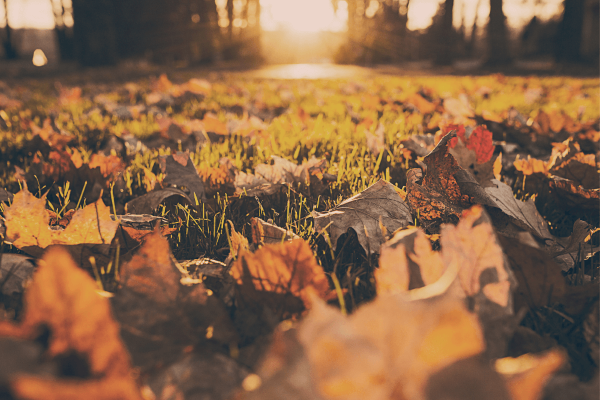Autumn in the UK is a season of transformation, as the landscape turns from lush greens to warm shades of gold, amber, and red. The air is crisp and fresh, carrying the earthy scent of fallen leaves and the faint smokiness of wood fires. Mornings often begin with mist hanging low over fields and rivers, adding a mystical quality to the countryside, while shorter days and cooler temperatures signal nature’s retreat in preparation for winter.
Wildlife is more active in this season, with squirrels scurrying to gather food, hedgehogs preparing for hibernation, and birds migrating south. Gardens take on a new character, with bursts of autumnal flowers like dahlias and asters and the last of the season’s harvest, including apples, pumpkins, and blackberries.
Important gardening tasks
Autumn is a crucial time for garden preparation as the weather starts to cool and leaves begin to fall.
Here are key tasks to help keep your garden healthy and ready for winter:
1. Lawn care and why an important gardening task
Rake up fallen leaves to prevent them from smothering the grass. Fallen leaves can form a thick, damp mat that blocks sunlight and air from reaching the grass. Without sunlight, grass can weaken and die, leaving patches in the lawn. Leaves also trap moisture, which encourages fungal growth, moss, and other lawn diseases that can damage grass.
While raking is important for lawns and paths, some gardeners rake-up leaves into specific areas, like under shrubs, where they can decompose slowly and provide insulation. They also benefit wildlife by providing shelter for hedgehogs, insects, and other wildlife.
Raked leaves can also be composted, providing nutrient-rich mulch or soil for the garden. This is an excellent way to recycle organic matter and enrich your garden naturally.
If you have a garden pond, remember to rake-off fallen leaves from the surface before they sink and start decomposing.
Aerate your lawn to improve drainage and reduce compaction.
Apply autumn lawn feed for strengthening roots and improving winter resilience.
Mow less frequently, but keep the grass relatively short before winter sets in.

2. Planting and pruning
Plant spring bulbs (like daffodils, tulips, and crocuses) in beds or pots for spring displays. A gardening task that transitions our outdoor space from winter to spring.
Divide and replant perennials to refresh your flower beds and encourage new growth.
Prune hedges and shrubs like roses, hydrangeas, and buddleia, removing dead or damaged wood.
Plant trees and shrubs; the cool, moist soil gives them time to establish before spring growth.
3. Tidy up borders and flower beds
- Cut back spent annuals and perennials but leave some, like seed heads, for wildlife and winter interest.
- Mulch beds with compost or bark to insulate roots and enrich the soil over winter.
- Remove weeds to reduce competition for nutrients and prevent them from seeding.
- Move tender plants like potted citrus and pelargoniums indoors or to a greenhouse.
- Add a layer of straw or fleece around delicate plants for extra insulation against frost.
4. Harvest and clear vegetables
- Harvest remaining vegetables, such as pumpkins, squash, and root vegetables.
- Clear spent crops and add them to the compost.
- Sow green manure in empty beds to improve soil health and reduce erosion.
5. Prepare Tools and Equipment
- Clean and oil garden tools to prevent rust and keep them ready for spring.
- Service lawnmowers and other equipment to ensure they are ready to use after winter.
These tasks will help keep your garden healthy and vibrant, giving it a great start for the next growing season. You can also add vibrancy to your garden by installing bird feeders and bird baths to attract our feathered friends and keep them fed over winter.





